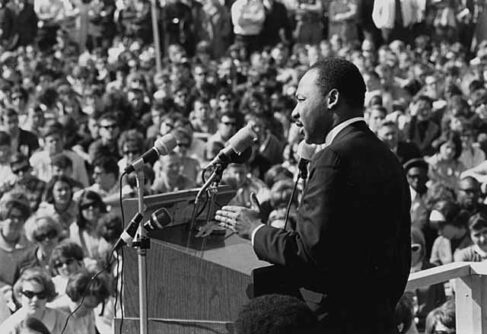Advocates of effective altruism present it as obvious that saving the most lives is the best use of philanthropic dollars, but if you think there’s more to life than just staying alive – that art, beauty, education, and “goods of soul” matter too, then there’s reason to be “uncomfortable” with an exclusive philanthropic focus on life-saving efforts…
Is the quintessential philanthropist the one who gives away the most money? New York Times columnist Nicholas Kristof implicitly raises this question in his latest column that features a young financier who gives away roughly half his income—in his case, that’s more than $100,000—to philanthropies.
This young fellow—aptly named, given the interest in what he does with his income, Matt Wage—is certainly to be admired for his generosity. But what makes Wage notable is that he styles himself as a practitioner of “effective altruism.” Effective altruists say that their aim is to accomplish the most good per charitable dollar.
Hmmm, you might be wondering—don’t all philanthropists aspire to do as much as they can with their gifts?
Yes, but those who identify themselves as “effective altruists” have a particular understanding of what it means to accomplish the most good: namely, to save the most lives, or at least to secure the greatest improvement in health, per dollar spent. Wage’s focus on saving lives is clear in what he told Kristof:
One thought I find motivating is to imagine how great you’d feel if you saved someone’s life. . . . If you somehow saved a dozen people from a burning building, then you might remember that as one of the greatest things you ever did. But it turns out that saving this many lives is within the reach of ordinary people who simply donate a piece of their income.
It sounds terrific—an admirable young philanthropist, lives saved. But the story of Wage’s effective altruism gives Kristof pause—and rightly so. Here’s what Kristof writes:
First, where do we draw the line? If we’re prepared to donate one-third of our incomes to maximize happiness, then why not two-thirds? Why not live in a tent in a park so as to be able to donate 99 percent and prevent even more cases of blindness?
I want to take my wife to dinner without guilt; I want to be able to watch a movie without worrying that I should instead be buying a bed net. There is more to life than self-mortification, and obsessive cost-benefit calculus, it seems to me, subtracts from the zest of life.
Indeed, where do we draw the line—why save anything for oneself and one’s family? Why not renounce all property other than the barest necessities? It’s not just for “zest of life.” It’s because there are other goods that require having our own property, including not just dinner outings with one’s spouse but many other very important goods that disappear from view when one is focused only on saving lives and health.
This leads to Kristof’s second point about the limits on the scope of effective altruism:
Second, humanitarianism is noble, but so is loyalty. So are the arts, and I’m uncomfortable choosing one cause and abandoning all others completely.
A philanthropist who absolutely prioritizes saving lives and health over every other cause is implicitly taking a highly debatable philosophic stand on the side of modern philosophers like Rene Descartes and Francis Bacon, who argued that continued health is the preeminent human good. This implies a rejection of the older, Aristotelian view that health is merely one good among the plurality of human goods. The Aristotelian tradition recognizes that there are other important goods—goods that include things like the arts but especially what Aristotle called “goods of soul.” The effective altruist presents it as obvious that saving the most lives is the best use of philanthropic dollars, but if you think there’s more to life than just staying alive—that art, beauty, education, and “goods of soul” matter too, then there’s reason to be “uncomfortable” with an exclusive philanthropic focus on life-saving efforts.
Kristof’s final point raises a question about whether the high-earning, high-giving philanthropist is truly the quintessential philanthropist:
Third, I flinch at the idea of taking a job solely because it’s high-paying — even if the money is to be given away.
I’ll say again that Matt Wage is to be admired. But there are many other worthy models of philanthropists—the poor widow who gives two coins (Mark 12:42); the person who finds his vocation in working with the needy; the community leader who starts his own nonprofit.
Effective altruism has powerful advocates: not just Matt Wage, but his Princeton mentor, the highly controversial philosopher Peter Singer. And effective altruists raise uncomfortable and challenging issues—who are you, indeed, to go out for dinner when that money could save a life?
But the ultimate philosophic premises of effective altruists are deeply contestable, and a more philosophically rich view of human goods than that held by the effective altruists can help think about how to balance philanthropy that relieves the most dire bodily suffering with philanthropy directed to other human goods.






